Module 5
1. Module 5
1.18. Page 3
Module 5: Angles
Explore
In the Get Started section you reviewed the angle relationships based on the three angles of a triangle. There are also angle pairs that have special relationships. Having words to describe angle pairs will be of help in discovering angle relationships.
The coloured angles are adjacent angles.
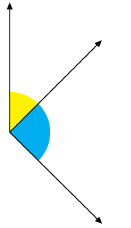
 Self-Check
Self-Check
SC 3. This illustration shows three pairs of angles.

Explain why all of these pairs are not adjacent pairs.
Intersecting Lines
The sizes of adjacent angles at the intersection of two lines are connected in a special way.

Can you identify pairs of adjacent angles at the intersection of line 1 and line 2?
![]() Self-Check
Self-Check
SC 4. Using the diagram in Intersecting Lines, complete the following statement. Then justify your answer.
∠1 + ∠2 = ____°.
SC 5. What is the sum of the measures of a pair of adjacent angles formed by intersecting lines?
supplementary angles: two angles that add up to 180°
In a pair of supplementary angles, one angle is the supplement of the other.
In the diagram you’ve been considering, ∠1 and ∠2, a pair of adjacent angles, are supplementary angles. Not all supplementary angles are adjacent. This is demonstrated in the following question.
 Self-Check
Self-Check
SC 6. In the following angle pairs, ∠c has a measure of 60°, and ∠d has a measure of 120°.

Which of these angles are supplementary angles but not adjacent angles?
Around the Corner
You saw that the angles at the intersection of two lines were connected in a special way. There is also a special connection between the sizes of adjacent angles making up a right angle.
Look at ∠a and ∠b in the following diagrams.

SC 7. Complete the following statement. Then justify your answer.
∠a + ∠b = ____°.
complementary angles: two angles with measures that add up to 90°
One angle is called the complement of the other.
∠a and ∠b are not only adjacent angles; they are also complementary angles. But not all complementary angles are adjacent. This is demonstrated in the following question.
 Self-Check
Self-Check
SC 8. In the following diagram, ∠c has a measure of 60° and ∠d has a measure of 30°.
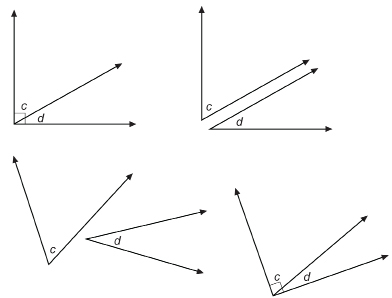
Which of the angles shown are complementary angles but not adjacent angles?
Angle Pairs in Your World
Complementary angles often occur at right-angle corners. For example, look at the square corners of a picture frame. The pieces that form the frame are cut at angles that add up to 90°. Commonly, those complementary angles are each 45°, but they don’t have to be equal. One could be 40° and the other could be 50°.
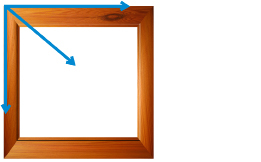
© YuM/shutterstock
There are countless examples of adjacent angles in nature, construction, art, and architecture.
What type of angle pairs are found in each of the following pictures?

© Martin Maun/shutterstock
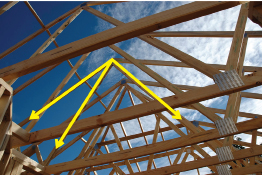 © John Leung/shutterstock
© John Leung/shutterstock
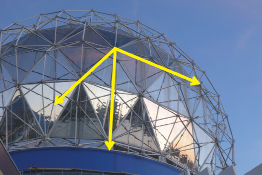
© Jim Parkin/4071317/Fotolia
 Share
Share
In Lesson 2 you identified angles in the topic for your Unit 3 Project. Now is a perfect time to find an example of a supplementary or adjacent angle pair. Use a sketch or photo to illustrate one of these angle pairs from your topic. Share these images with others and see what they have done—this might help you with your own project.
Save a copy of your work in your course folder as you will need this information for your Unit 3 Project.